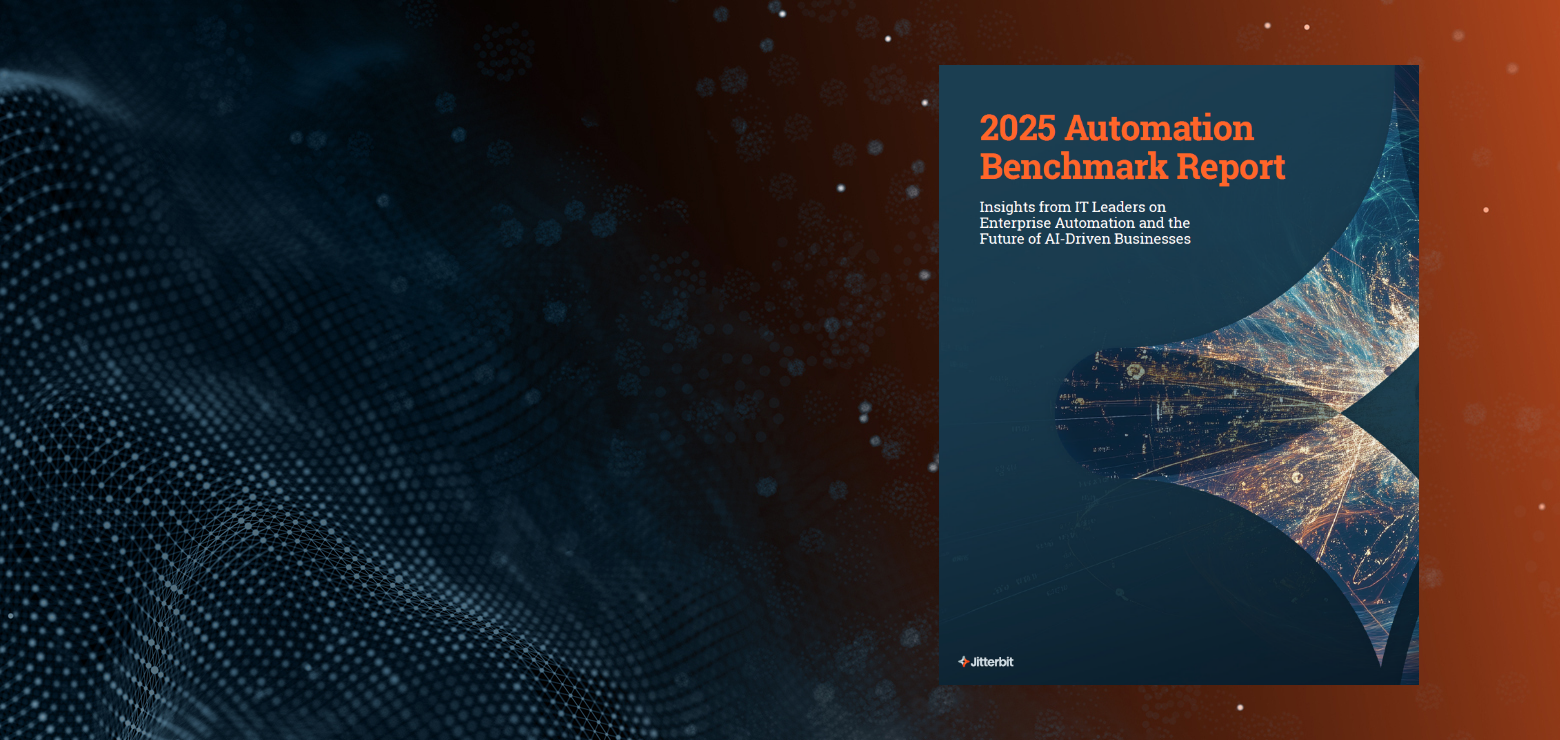By Amber Wolff, Content Manager
Artificial intelligence has emerged as the centerpiece of modern process automation, going from little more than a novelty to a near-necessity in under ten years. But while it’s important to know that AI will be necessary to remain competitive in the coming years, it’s more useful to understand how businesses are approaching their transformation journeys — how far they’ve gotten, the benefits and challenges they’re seeing, and their plans for the future.
To offer a fuller picture of the current automation landscape, Jitterbit surveyed more than 1,000 enterprise IT decision makers across the U.S. and U.K. We’ve collected their insights in the 2025 Automation Benchmark Report, which highlights the enthusiasm for AI-driven automation (roughly 99% of enterprises report using AI within their businesses today!), and the ongoing challenge these companies face in breaking down data silos.
The Growing Data Divide
Without proactive management, data silos tend to multiply over time. 67% of enterprise respondents reported having deployed over 500 applications, creating an enormous burden for anyone creating, updating and maintaining these integrations. Generally, the responsibility for enterprise automation is being placed on IT teams, with more than two-thirds of respondents saying these teams carry out automation strategies.
But while almost all IT leaders recognize the importance of seamless integration and automation, 71% still lack a unified platform to achieve it – increasing the likelihood that already understaffed and overburdened IT teams will continue to carry the load.
Empowering Line-of-Business Leaders
As the number of applications and the amount of data continues to grow, increasing efficiency will require businesses to empower non-technical users. Decision-makers recognize this, with 97% agreeing that giving line-of-business leaders the ability to build, deploy and maintain applications and integrations is critical for speeding up time-to-value.
This shift toward self-sufficiency will have a number of benefits. In addition to freeing up IT teams to focus on more mission-critical initiatives, it will also eliminate bottlenecks for nontechnical teams, who will no longer have to hand off projects to IT, then wait until they can be addressed. This in turn will improve business agility, lower costs and drive user-led innovation and collaboration — a fact respondents seemed well aware of, with more than 80% anticipating a moderate to high ROI from a unified platform.
IT’s Biggest Challenges
But as they move toward realizing these potential benefits, IT leaders are still facing significant challenges, especially in the areas of cybersecurity, data privacy, scaling and compliance. In fact, half of those surveyed rated vulnerabilities in AI-powered third-party integrations as their top data security concern — underscoring the need for stronger AI security protocols and accountability measures to protect businesses as they embrace new technologies.
The Rise of Agentic AI
Despite the bumps decision-makers reported on their business transformation journey, some are already looking toward new horizons. Many respondents saw agentic AI as the next frontier, with nearly a third already planning for the next wave of autonomous decision-making systems. These developments won’t replace current AI developments as much as build upon them: To be truly effective, agentic AI features will require end-to-end automation.
But businesses can’t stop there. As Manoj Chaudhary, Jitterbit’s chief technology officer, said, “Legacy automation, designed to execute isolated tasks, is no longer sufficient to keep up with modern business demands. Agentic AI is driving a fundamental shift — from task-based automation to intelligent automation with adaptive workflows that drive real business outcomes.”
The Road Ahead: Overcoming Barriers to Success
While their paths to automation and AI adoption varied, most respondents agreed that the opportunity for businesses to leverage AI-driven automation to improve efficiency and drive innovation is immense. As Jitterbit’s report highlights, organizations that can overcome the hurdles of resource shortages, security concerns and integration challenges will be well-positioned to thrive in the future of AI-infused automation.
For more insights uncovered in our survey, explore the full 2025 Automation Benchmark Report.



